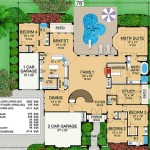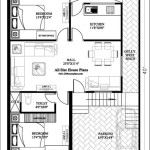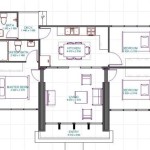Essential Aspects of an Architectural House Plan
An architectural house plan is a comprehensive blueprint that outlines the design, layout, and construction details of a building. It serves as a roadmap for the construction process, ensuring that the project is completed according to the architect's vision and within the specified budget and timeline.
Essential Elements of a House Plan
A well-designed house plan should include the following elements:
1. Site Plan
The site plan shows the location of the building on the property, including setbacks, easements, and any existing structures. It also includes information about the topography, drainage, and utilities.
2. Floor Plans
Floor plans provide a detailed view of each level of the building, showing the layout of rooms, hallways, stairs, and other architectural features. They also include measurements, window and door placements, and the location of plumbing and electrical fixtures.
3. Elevations
Elevations are drawings that show the exterior walls of the building from different angles. They provide a comprehensive view of the building's massing, proportions, and architectural style.
4. Sections
Sections are drawings that cut through the building, showing the interior structure and relationships between different spaces. They help visualize the building's spatial relationships and the flow of movement throughout.
5. Details
Details provide specific information about the construction of particular elements, such as roof framing, window and door details, and cabinetry. They ensure that the building is constructed according to the architect's specifications.
Importance of a House Plan
A well-developed house plan is essential for several reasons:
1. Communication
The house plan serves as a common language between the architect, contractors, and other professionals involved in the construction process. It ensures that everyone involved has a clear understanding of the project's goals and expectations.
2. Planning and Scheduling
The house plan provides a basis for developing a construction schedule and budget. It helps identify the materials and resources needed, as well as the sequence of construction activities.
3. Cost Control
By clearly defining the project's scope and specifications, the house plan helps prevent costly changes or rework during construction.
4. Permitting
Most municipalities require an approved house plan for building permit applications. The plan must demonstrate that the building meets applicable building codes and zoning regulations.
Hiring an Architect
Hiring a qualified architect to design your house plan is highly recommended. An architect will work with you to develop a plan that meets your specific needs, budget, and aesthetic preferences. They will also guide you through the permitting process and ensure that the building is constructed to the highest standards.
Conclusion
An architectural house plan is a crucial tool for successful building projects. By outlining the essential elements of a house plan and understanding its importance, you can ensure that your dream home is built efficiently, within budget, and to your exact specifications.

House Plans Home Floor Architecturalhouseplans Com

House Plans How To Design Your Home Plan

Do You Imagine When We Create Your Imagination Into Reality With The Low Architectural House Plans Projects Architecture Building Designs

Floor Plan Wikipedia

Free House Design Home And Plans

Example Of A Real Architectural Floor Plan Using Geometric Point Grid Scientific Diagram

House Plans How To Design Your Home Plan

Design Architecture Floor Plan Drawings

Where You Can Buy House Plans Live Home 3d

How To Build A House From Paper Plaster Architectural Digest








